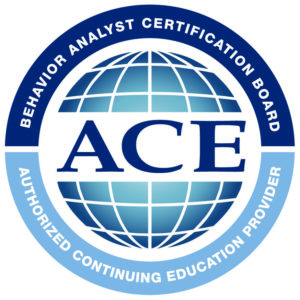Our pediatric Occupational Therapists evaluate a child’s current skills for playing, motor and neuromuscular performance, and daily activities. Occupational Therapists help maximize a child’s daily life skills, which include play, peer interaction, and self-care activities by addressing sensory, social, motor, and environmental issues.
What is Occupational Therapy?

How Can We Help?
Occupational Therapists are highly trained healthcare professionals that evaluate and assist children that are having difficulty participating in meaningful activities or “occupations” that are needed to conduct their daily routines and live their life to the fullest. Some areas that occupational therapy can help with include:
- Fine motor skills
- Gross motor skills
- Motor planning skills
- Sensory processing difficulties
- Visual motor and visual perceptual skills
- Self-care
- Decreased strength
- Social emotional difficulties

Collaborative Approach
At EAS, we have the ability to interact with an interdisciplinary team by having in-house experts in ABA Therapy, Occupational Therapy, and Speech/Language Therapy all within the same clinic. We value collaboration with caregivers, teachers, and therapists outside of EAS and realize that collaboration is essential in creating effective carry-over from our clinic to the home and school.
Our therapists work with a wide variety of abilities. We enjoy working with any child who needs extra support to meet his/her full potential!
Signs Your Child May Benefit from Occupational Therapy
Does your child have difficulties with day-to-day activities at home, school, or in the community? Some examples of this may look like:
- Difficulty self-regulating, transitioning, or engaging with peers
- Meltdowns, tantrums, or fidget behavior
- Difficulty achieving age-appropriate milestones
- Sensitivity to clothing textures, tags, messy activities, food textures, or loud noises
- Difficulty with dressing, self-feeding, or shoe tying
- Difficulty holding or using toys
- Poor pencil grasp, writing, drawing, or cutting

Resource Videos
Check out our free resource videos on a variety of topics including: visual perceptual skills, gross motor skills, prewriting shapes and many more!
FAQ
Do you provide Occupational Therapy services to children who do not have an Autism Diagnosis?
Yes! We are accepting children with any diagnosis for Speech/Language and Occupational Therapy Services.
My child still has significant behaviors, are they ready for speech/language therapy or occupational therapy?
Absolutely! There are no specific expectations or behavioral criteria for your child to participate in therapeutic interventions. Our SLPs and OTs at EAS are trained to provide services for every child. The collaborative approach also helps our therapists better understand your child’s behavioral needs in order to maximize success and progress.
How does the Occupational Therapy process work?
Occupational therapy is different for every child and depends on the child’s specific abilities and needs. To help ensure that we meet the needs of your child and family, after we receive a referral, we conduct a caregiver consultation and assessment to identify goals and construct a therapy program that is specific to the needs of your child and family. After that, we begin the individualized intervention plan to improve your child’s skills and abilities and maximize his or her independence in daily life. Finally, we complete an outcomes evaluation, or re-assessment, to ensure that goals are being met and/ or make changes as needed.
How long are Occupational Therapy sessions?
The length and number of sessions per week depends on the child’s individual needs. We usually recommend half-hour to one-hour sessions, depending on the child.
What is sensory input and sensory processing?
Sensory input refers to everything in our environment that we experience. When we see, hear, taste, touch, smell, or feel something, our brain tells us what we are experiencing and how to respond. Sensory processing is the way the brain receives messages from the senses and turns them into appropriate motor and behavior responses.
What are the senses?
When talking about sensory processing, there are 8 different senses we refer to:
- Olfactory-sense of smell
- Auditory-sense of hearing
- Visual-sense of sight
- Gustatory-sense of taste
- Tactile-sense of touch
- Vestibular-sense of movement
- Proprioception-sense of body position, specifically input to the joints and muscles
- Interoception-sense of internal functions
ABA addresses fine and gross motor skills too, how is Occupational Therapy different?
Occupational therapists are trained to identify and treat the fundamental skills inhibiting fine motor and gross motor development. ABA is able to enhance the learning of these skills using positive reinforcement training.
What should you expect to be included with Occupational Therapy services?
- An individualized evaluation to determine your family and child’s specific abilities and areas of need
- A customized intervention plan to improve your child’s ability to perform daily life activities and reach his or her specific goals
- An outcomes evaluation, or re-assessment, as well as progress summaries to ensure that the goals are being met and/or make changes to the intervention plan



